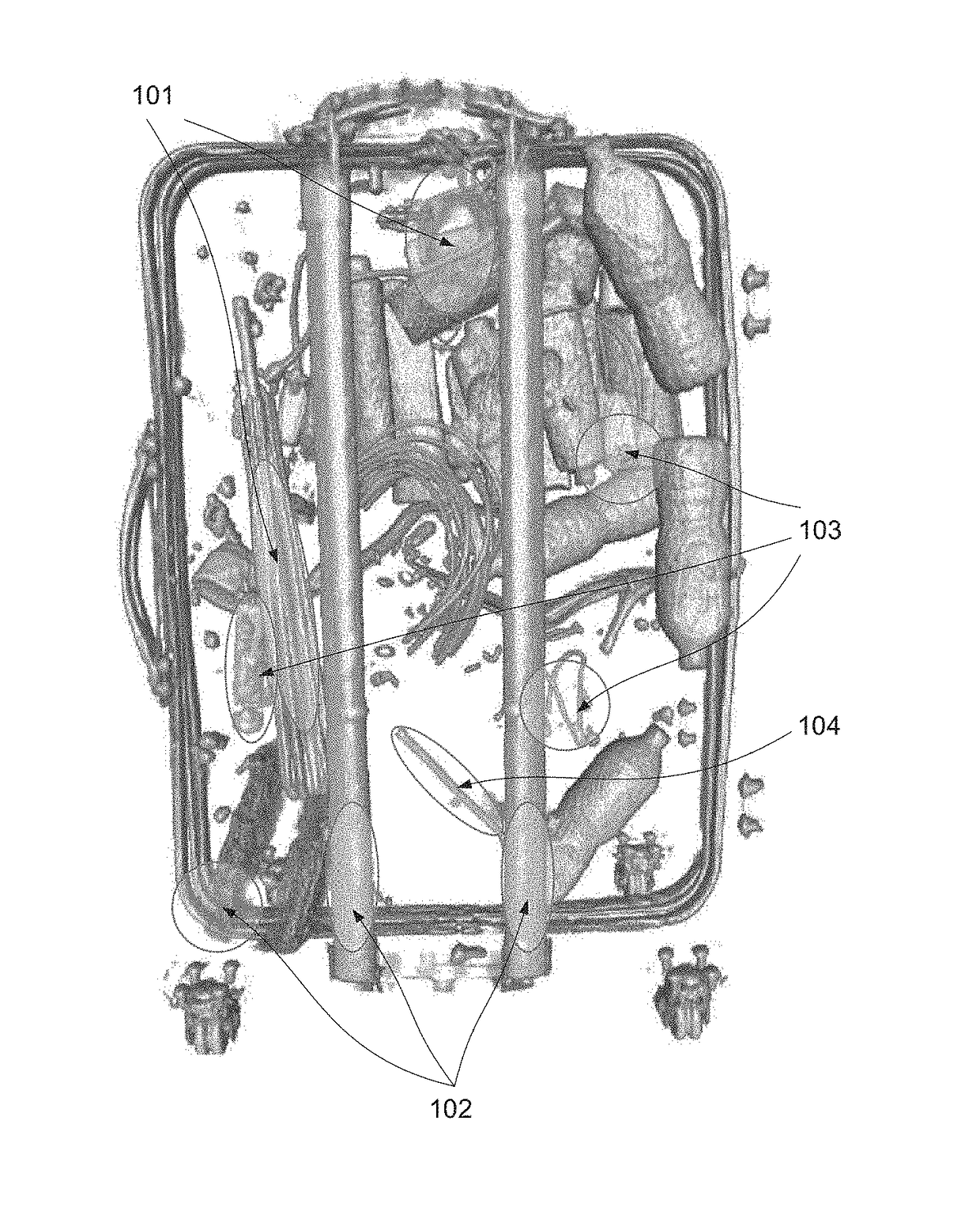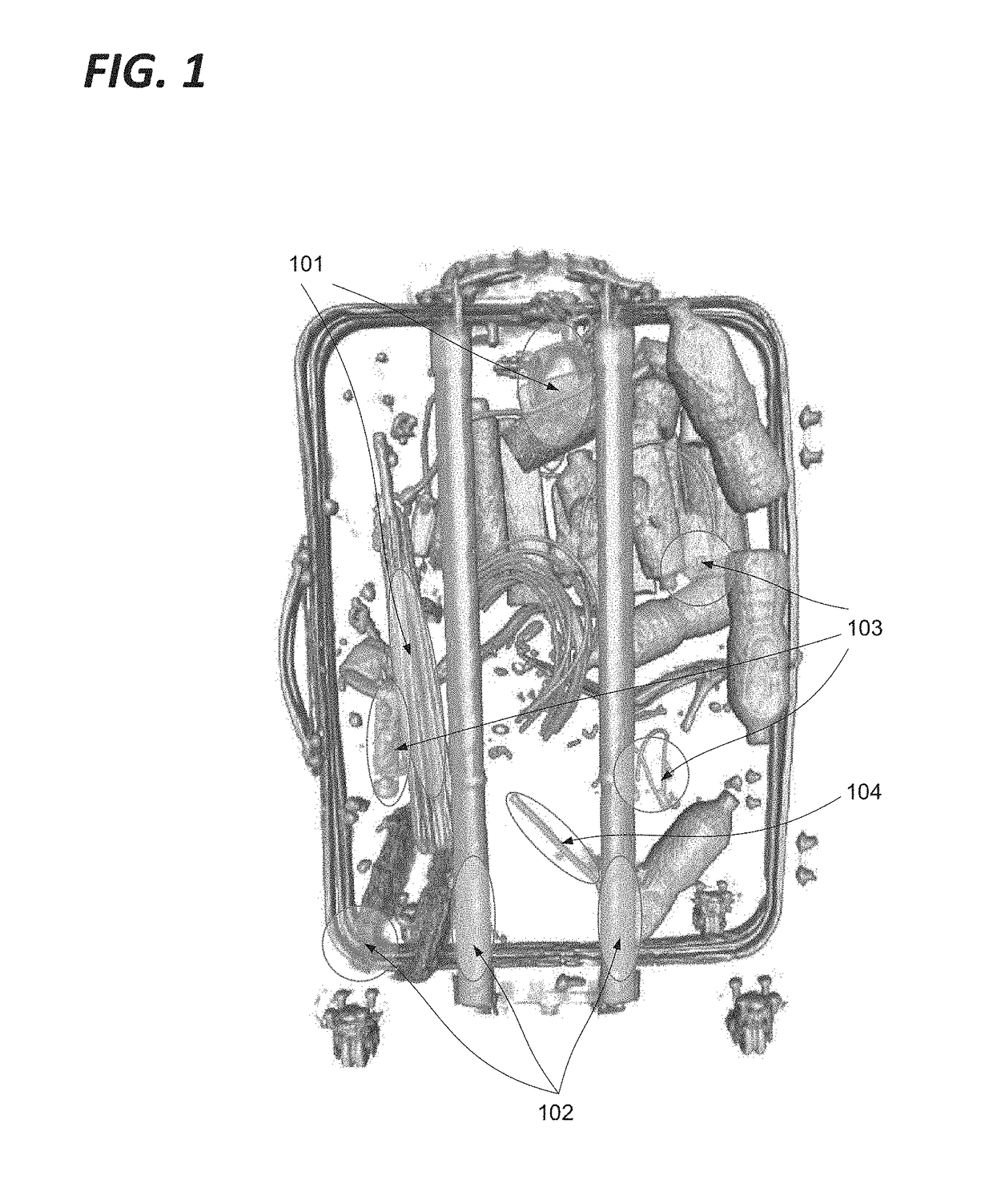Point of view selection in virtual 3D environment
a virtual environment and point of view technology, applied in the field of assisted exploration of computer generated virtual environments, can solve the problems of inability to display the original material colours, the contour tree algorithm is vulnerable to noise, and the objects located in the corners, edges or inside the luggage frame are difficult to identify, so as to reduce the need for intervening exploratory actions driven by users, reduce system resources, and reduce system calls and other drains.
- Summary
- Abstract
- Description
- Claims
- Application Information
AI Technical Summary
Benefits of technology
Problems solved by technology
Method used
Image
Examples
Embodiment Construction
[0041]FIG. 2 shows a 3D computer generated environment comprising a plurality of virtual objects. As shown in FIG. 2, there is provided an object of interest 200, and three obstructing objects 210, 220 and 230. Each object is defined by a number of adjacent voxels, represented by cubes in FIG. 2. Each voxel has and associated density value. The density of each voxel in FIG. 2 is represented by its opacity, so that as shown there are three levels of density-high density materials are shown as pale and opaque, medium density materials are mid grey and somewhat transparent, and low density materials are dark in colour, and highly transparent. The conflation of density and transparency is deliberate, since in the context of the scanning technologies in question denser materials are generally less permeable to the rays used to develop the images. Often, a particular object will appear as a dense core, with lower density boundary, which may be caused by an outer decorative or protective l...
PUM
 Login to View More
Login to View More Abstract
Description
Claims
Application Information
 Login to View More
Login to View More - R&D
- Intellectual Property
- Life Sciences
- Materials
- Tech Scout
- Unparalleled Data Quality
- Higher Quality Content
- 60% Fewer Hallucinations
Browse by: Latest US Patents, China's latest patents, Technical Efficacy Thesaurus, Application Domain, Technology Topic, Popular Technical Reports.
© 2025 PatSnap. All rights reserved.Legal|Privacy policy|Modern Slavery Act Transparency Statement|Sitemap|About US| Contact US: help@patsnap.com



